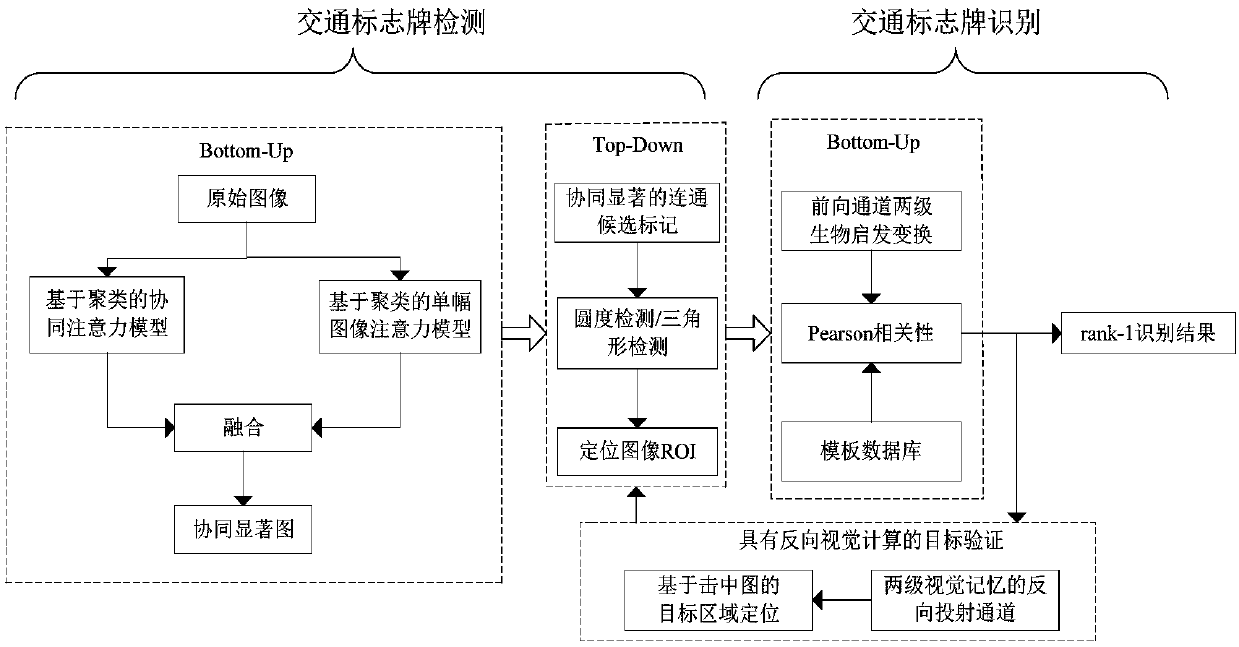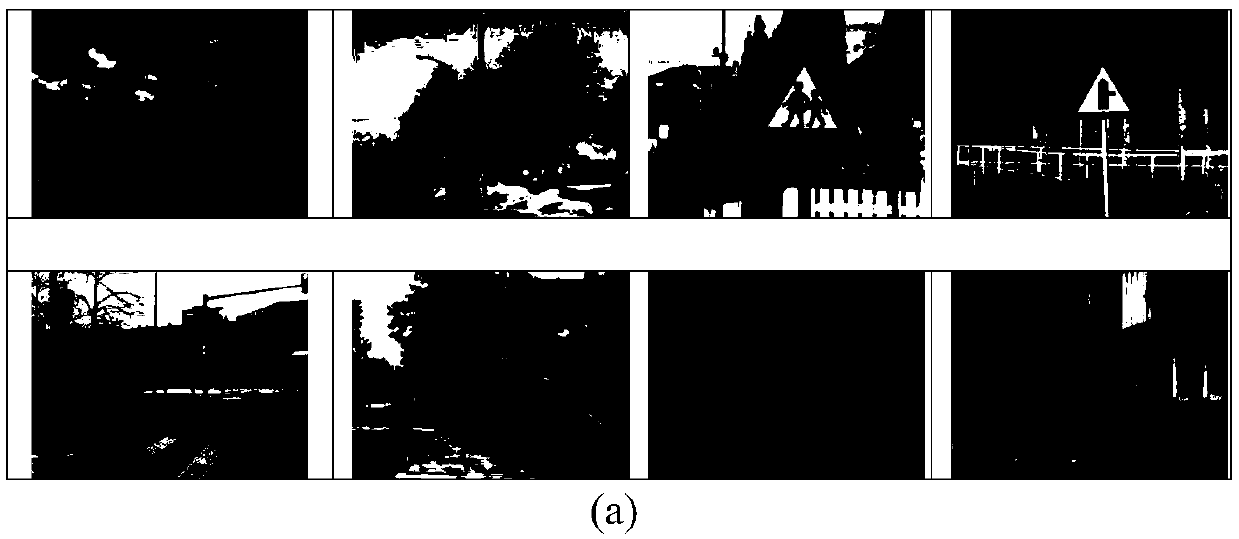Traffic sign detection and identification method based on collaborative bionic vision in complex city scene
A technology for signs and cities, applied in the intersection of biological information and machine vision technology, can solve the problem of neglecting the correlation of multiple images
- Summary
- Abstract
- Description
- Claims
- Application Information
AI Technical Summary
Problems solved by technology
Method used
Image
Examples
Embodiment 1
[0111] Implementation example 1: Salient region detection based on bionic vision
[0112] Step A: Obtain multiple images to be detected in continuous scenes;
[0113] Step B: extract three bottom-up visual attention cues of the image set to be detected consisting of all the images to be detected, and obtain the clustering collaboration graph of the image set to be detected, such as figure 2 , so that the same or similar areas that recur in the image set can be highlighted;
[0114] Step C: Obtain the attention saliency map of each image to be detected by extracting two bottom-up visual attention cues of each image to be detected;
[0115] Wherein, the acquisition process of the cluster synergy map in the step B is the same as that of the single image attention saliency map in the step C, when obtaining the cluster synergy map, first perform scale normalization processing on each image to be detected ,details as follows:
[0116] Using the bilinear interpolation method, res...
PUM
 Login to View More
Login to View More Abstract
Description
Claims
Application Information
 Login to View More
Login to View More - R&D
- Intellectual Property
- Life Sciences
- Materials
- Tech Scout
- Unparalleled Data Quality
- Higher Quality Content
- 60% Fewer Hallucinations
Browse by: Latest US Patents, China's latest patents, Technical Efficacy Thesaurus, Application Domain, Technology Topic, Popular Technical Reports.
© 2025 PatSnap. All rights reserved.Legal|Privacy policy|Modern Slavery Act Transparency Statement|Sitemap|About US| Contact US: help@patsnap.com



